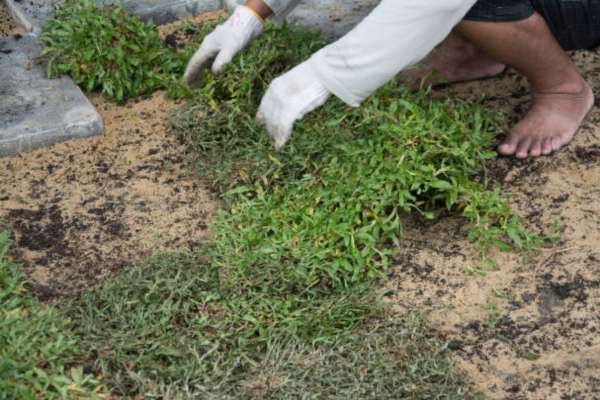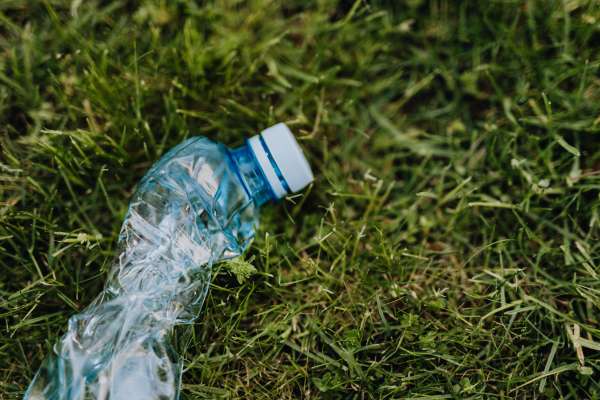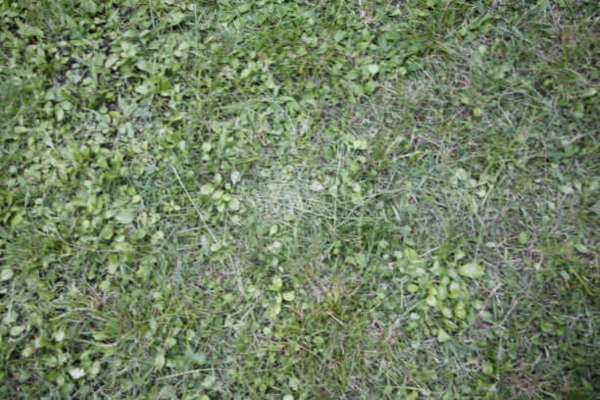Dealing with a grub-damaged lawn can be daunting, but understanding how to repair grub damaged lawn is key to revitalizing your outdoor space. This essential guide provides you with effective strategies to restore the health and aesthetics of your yard, emphasizing the importance of timely intervention and the right techniques. Discover the benefits of restoring your lawn from grub damage, including improved curb appeal and a healthier environment for plants and wildlife. Learn why taking action against grub damage is crucial and how you can achieve a lush, vibrant lawn once again. With our expert tips, you’ll grasp the necessary steps to repair your yard, ensuring it thrives for years to come.
What Causes Grub Damage On A Lawn?
Grub damage on a lawn is typically caused by beetle larvae feeding on the roots of grass plants. These larvae, also known as grubs, are commonly found in the soil and can cause significant damage to a yard if left untreated. The most common culprits are Japanese beetles, June bugs, and European chafers, which lay their eggs in the soil during the summer months.
How Can I Identify Grub Damage On My Lawn?’
Identifying grub damage on your lawn can be done by looking for signs such as wilting or browning grass patches, spongy or loose turf, and an increase in bird activity feeding on the lawn. You may also notice grubs themselves when digging up a section of affected grass, typically found near the soil surface. Another way to confirm grub damage is by monitoring the health of your yard during late summer or early fall when grubs are most active.
Can Grub Damaged Lawns Be Repaired?
Yes, grub-damaged lawns can be repaired with proper care and maintenance. To repair a grub-damaged lawn, it is important to first treat the grubs using appropriate pesticides or natural remedies. Once the grubs are under control, you can begin the process of repairing the damage to the grass.
Mowing the Lawn to an Appropriate Height

The journey to repair begins with mowing your lawn to an appropriate height. It’s crucial to avoid cutting the grass too short, as this can stress the grass and make it more susceptible to disease and further damage. Ideally, grass should be kept at about 3 inches tall. This height helps to promote a deeper root system, which is essential for a healthy yard that can withstand and recover from grub damage. Mowing your yard to this height also helps to shade the soil, reducing the evaporation of water and keeping the soil moist, which is beneficial for new grass seed to germinate and grow.
Spreading the Seed Evenly

For effective repair of a grub-damaged lawn, evenly spreading grass seed is vital. After aerating the soil and applying any necessary soil amendments, distribute the seed uniformly across the affected areas. Using a broadcast spreader can help achieve an even distribution, ensuring no areas are too dense or too sparse. Proper seed distribution aids in uniform growth and helps prevent patches, leading to a thicker, more resilient yard. Ensuring even coverage also maximizes the seed-to-soil contact, crucial for germination and the establishment of new grass.
Watering the Lawn Sufficiently

Water plays a pivotal role in the recovery of a grub-damaged yard. After seeding, ensure the lawn is watered sufficiently to maintain moist soil, crucial for seed germination and establishment. Initially, light and frequent watering are essential to prevent washing away the seeds or causing them to clump, which could result in uneven growth. As new grass establishes, gradually transition to deeper, less frequent watering to encourage deep root growth, enhancing the yard’s drought tolerance and reducing its susceptibility to future grub damage.
Timing for Optimal Grub Removal

The timing of grub removal is critical. The best time to tackle grub control is when they are young and actively feeding near the surface, typically in late summer to early fall. This is when they are most vulnerable to treatments. Applying a preventive grub control product in late spring or early summer can also be effective in preventing the next generation of grubs from causing damage. By understanding the lifecycle of the grubs plaguing your yard, you can time your interventions for maximum impact, preventing them from maturing into beetles and breaking the cycle of infestation.
Determining the asperity of the damage

Determining the severity of the damage caused to your lawn by grubs is crucial in planning an effective restoration strategy. An initial visual inspection can give you a general idea of the affected areas, but digging a little deeper – quite literally – can provide more insight. Gently lift a small section of the turf to check for grub presence and assess root health. If you notice extensive root destruction or an infestation of grubs, this indicates a more severe issue that requires immediate attention.
Selecting appropriate grass seed

By carefully selecting appropriate grass seed based on your lawn’s unique characteristics and needs, you can ensure a healthy and vibrant yard that will withstand challenges like grub damage. Conduct research on different grass varieties and consult with local experts to make an informed decision that will set your yard up for success in the long run.
Spreading the seed evenly

Spreading the seed evenly is a crucial step in repairing a grub-damaged lawn. It’s important to ensure that each patch of grass receives an equal amount of seeds, allowing for consistent growth and coverage. By using a spreader or dispersing the seeds by hand in a methodical manner, you can prevent over-seeding in some areas and under-seeding in others, leading to a more uniform appearance.
Establishing a proper watering routine

Establishing a proper watering routine is the final, yet ongoing, step in nurturing your lawn back to health. Proper hydration is key to seed germination and the establishment of new grass. The soil should be kept moist but not waterlogged, requiring a delicate balance that prevents both underwatering and overwatering. Implementing a consistent watering schedule, especially in the early mornings, helps in minimizing evaporation and maximizing water absorption, fostering a conducive environment for the new grass to flourish.
Using eco-friendly pest control methods
Repairing a grub-damaged lawn goes beyond mere aesthetics; it’s about adopting eco-friendly practices that ensure your lawn’s health and environmental safety. Using eco-friendly pest control methods is not just a choice but a responsibility. These methods focus on minimizing chemical use, favoring biological and cultural controls that reduce grub populations without harming beneficial organisms. Introducing beneficial nematodes or applying milky spores are excellent examples of biological controls that target grubs effectively, ensuring your yard repair efforts are sustainable and eco-conscious.
Long-term strategies for a healthy lawn

One effective long-term strategy for maintaining a healthy and stripe lawn without the use of a roller is to adjust your mowing patterns regularly. By varying the direction in which you mow your land each time, you can promote more even growth and prevent soil compaction. This not only enhances the overall appearance of your lawn but also encourages stronger root development, leading to a healthier and more resilient grass.
Proper disposal of debris

Proper disposal of debris is essential not only for maintaining a clean and organized environment but also for preventing any potential hazards. When it comes to debris from landscaping or home improvement projects, separating materials like wood, metal, and plastic can streamline the recycling process. Additionally, disposing of hazardous materials such as paints or chemicals responsibly ensures they do not harm the environment.
Applying natural Grub control solutions

Grub infestations can wreak havoc on a lawn, leaving behind unsightly patches of dead grass and uprooted turf. While chemical pesticides may seem like a quick fix, natural grub control solutions offer a safer and more environmentally friendly alternative. One effective method is introducing beneficial nematodes to the soil, as these microscopic organisms feed on grubs and help prevent further damage to your yard.
The Final Thought
To repair a grub-damaged lawn requires patience, consistency, and the right approach. By following the steps outlined in this article, you can effectively restore your lawn to its former health and vitality. Remember to properly identify the issue, treat the grubs, reseed or sod as needed, and maintain proper lawn care practices to prevent future damage. With determination and effort, your yard can bounce back from grub infestations and thrive once again. Take action today to start repairing your grub-damaged yard and enjoy a lush, green yard once more.
